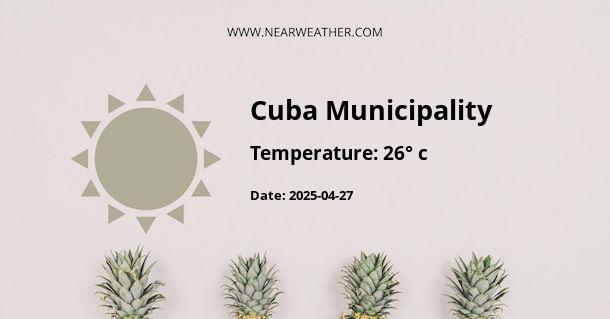Climate and Weather in Cuba
Cuba, the largest island in the Caribbean, boasts a diverse climate that is influenced by its position in the Caribbean Sea and the trade winds that blow across the region. The country experiences a tropical climate, characterized by warm temperatures, high humidity, and distinct wet and dry seasons.
Temperature and Seasons
Throughout the year, Cuba enjoys warm temperatures, with average highs ranging from 26°C (79°F) in January to 32°C (89°F) in July and August. The country experiences two main seasons: the dry season, known as "invierno" (winter), which runs from November to April, and the wet season, known as "verano" (summer), which occurs from May to October. During the wet season, temperatures remain high, but the humidity can make it feel even warmer.
The eastern part of the island tends to be slightly warmer than the western part, with the city of Santiago de Cuba experiencing some of the highest temperatures in the country. Additionally, the mountainous regions, such as the Sierra Maestra, can have cooler temperatures due to elevation.
Rainfall and Hurricanes
Cuba experiences distinct wet and dry seasons, with the wet season bringing the majority of the country's annual rainfall. The average annual rainfall varies across the island, with the western regions generally receiving less rainfall than the eastern regions. The wet season is also the time when Cuba is most at risk of hurricanes, which can bring heavy rainfall, strong winds, and storm surges. The hurricane season in the Caribbean typically runs from June to November, with the peak of activity occurring between August and October.
It's important to note that Cuba's climate is also affected by the trade winds and the warm waters of the Caribbean Sea, which can contribute to the development of tropical storms and hurricanes. The northern coast is particularly vulnerable to the impacts of hurricanes, with some areas experiencing frequent and severe storms.
Best Time to Visit
The dry season, from November to April, is generally considered the best time to visit Cuba, as the weather is more predictable, and the risk of hurricanes is lower. The months of December to March are particularly popular among tourists, as the temperatures are comfortable, and the chance of rainfall is minimal. However, it's worth noting that this is also the peak tourist season, so the island may be more crowded during these months.
Conclusion
In conclusion, Cuba's climate is characterized by its tropical warmth, distinct wet and dry seasons, and the potential impact of hurricanes. Whether you're seeking sunny days for beach relaxation or hoping to explore the rich culture and history of the island, understanding Cuba's climate can help you plan the perfect time to visit this captivating Caribbean destination.
A - Cuba Municipality's Latitude is 38.219719 & Longitude is -7.921140.
A - Weather in Cuba Municipality is 26° today.
A - Climate Conditions in Cuba Municipality shows clear sky today.
A - Humidity in Cuba Municipality is 34% today.
A - Wind speed in Cuba Municipality is 14.83 km/h, flowing at 50° wind direction. today.

- Weather in São Manços
- Weather in Figueira Dos Cavaleiros
- Weather in São João de Negrilhos
- Weather in Evora
- Weather in Reguengos de Monsaraz
- Weather in Nossa Senhora de Machede
- Weather in Distrito de Évora
- Weather in Serpa
- Weather in Azinheira Dos Barros e São Mamede do Sádão
- Weather in Santa Maria de Machede